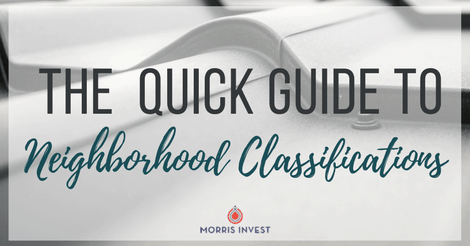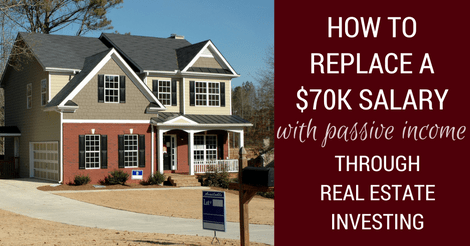
Neighborhood classifications can be a tricky subject for new real estate investors. Many newbies find the lingo intimidating, but don’t let that stop you from taking action! Neighborhood classifications are simply a system used by investors to measure if a property fits within their investing strategy.
These classifications are not an exact science, but loose terms. Let’s dive into this classification system.
An A class property is usually a large home in a nice neighborhood. Think lots of fancy bells and whistles—central air systems, granite countertops, the works! An A class property could also be a nice, downtown apartment. These types of properties will be costly, and the rent will be pretty high too.
You might already be thinking that because the rent is higher, that you can make more by investing in these properties. But in reality, the ROI is lower in an A class neighborhood. This is because the up-front cost is high, and the rents don’t keep up with the costs. In our experience, these types of properties can create the biggest headaches for investors! Tenants in an A class property are typically higher maintenance. Not to mention, if there are more amenities in a property, you’ll have more upkeep!
An A neighborhood is also more likely to be affected by a recession than the other classifications. Let’s say the economy takes a dive—workers with higher incomes are the first to lose their jobs! Investing in an A class property isn’t the best strategy for earning steady income.
I like to refer to B class properties as “in transition.” A B class neighborhood oftentimes is on it’s way up. Perhaps eventually, it might transform into an A class. In comparison to A class neighborhoods, the properties will be more distressed, and lower cost.
Here’s an example: think about a house that an elderly couple may have lived in for a few decades. They have kept up with it in terms of quality, but the design is dated. Think ugly wallpaper, and old shag carpet covering hard wood floors. There’s nothing wrong with the house, it just needs a little updating. That’s exactly what I think of when I think about a B class property.
A C class property is much different, and in most cases needs an overhaul. A C class property is older, missing some major mechanical, and often has been sitting vacant. My experience with C class properties often entails an extensive rehab.
Most people I encounter hold a lot of misconceptions about C neighborhoods and C class tenants. I for one, love C class neighborhoods, and purchase most of my properties there. I can buy low, add a ton of value through the rehab, and then have a solid investment for years to come. C class tenants are typically hard-working, blue-collar Americans.
A D class property is usually located in a neighborhood with high crime levels. Imagine abandoned, boarded-up homes. Check out my video about whether or not you should invest in D neighborhoods.

Ready To Build Passive Income Through Rental Real Estate?
Ready to talk about your goals? We're here to show you the tools and teach you the process to begin earning legacy wealth for you and your family.







